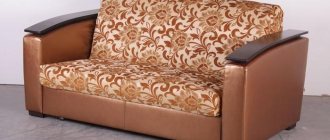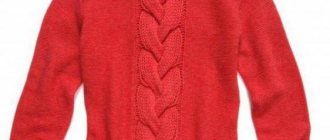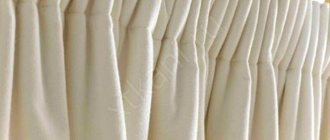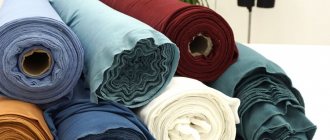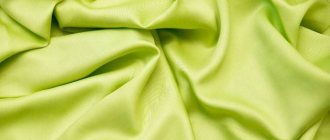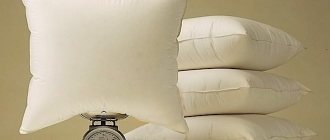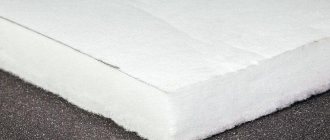The history of human use of natural fibers goes back more than ten thousand years. The first artificial materials were obtained in the century before last, and synthetics came into wide use a little more than half a century ago. Since then, almost every year new synthetic fabrics and new names for them appear on sale, textile technologies are constantly being improved, and the properties of materials are improving.
History of man-made materials
The first raw materials that people used to produce textiles and household items were the well-known flax, hemp, cotton, wool, and silk. These natural materials have survived many historical eras and are widely used today. The idea that a person can create artificial fibers from other substances was expressed by French encyclopedists, but they were put into practice only in 1890. The reason for this was research carried out at the gunpowder plant in Besançon (France), as a result of which, over time, the production of threads from hydrated cellulose and viscose was established. On their basis, the first artificial fabrics were created, primarily the popular staple, which is in great demand today, as well as acetate, cupra, lyocell, modal .
A new step in the development of the textile industry was the synthesis of fiber-forming polymers, the raw materials for which were natural carbon compounds, primarily oil, coal and gas. The modern list of synthetic materials is very extensive, and historically, the names of the same fabric can be different in different countries. Based on their composition and structure, the following types of polymers are distinguished:
- polyamide,
- polyester,
- acrylic,
- polyvinyl chloride and polyvinyl alcohol,
- polypropylene (polyoliphene),
- polyurethane.
New classes of third-generation polymer fibers include polyamides and polyethylenes with high molecular weight, polybenzoxazole, polybenzimidazole, as well as glass and ceramic threads, nanofilled and nanosized fibers. So far, the production of such innovative polymer materials is limited, and their scope is limited to various fields of technology and medicine, but it is possible that synthetic fabrics based on them, as well as new artificial materials, will soon appear.
Pay attention to...
The dangers of synthetic fabrics are still discussed. People’s doubts are not in vain: low-quality synthetics, which poured into our markets back in the 90s, have not gone away today. This fabric has a characteristic unpleasant odor, poor-quality coloring, and the product itself can be sewn carelessly. Naturally, such things can easily irritate even a healthy person, not to mention those suffering from allergies.
But if you choose synthetic products correctly, they will become your faithful assistants in creating your wardrobe. So, when choosing clothes made from artificial fabrics, consider several conditions:
1. Always look at the product tag. The composition must be indicated on it: if the fabric is mixed, the proportions of natural and artificial materials are indicated. Give preference to those things that contain not only synthetics.
2. Inspect the item itself: check for odor and poorly applied paint. High-quality synthetic products, despite the artificial composition, look neat, reliable and beautiful.
3. If you have delicate sensitive skin, and especially allergies, it is better to try not to overuse things made of synthetics. The best option for you is things made of cotton with the addition of lycra or clothes made of viscose, which to some extent can be classified as synthetics.
4. Consider the time of year. If it’s a hot summer outside, it’s simply unreasonable to buy a polyester dress: you will be extremely uncomfortable in it. Therefore, during this period, give preference to natural fabrics or more open outfits made from mixed fabrics. In cold autumn, there is nothing better than waterproof nylon or polyester to protect from rain and wind, and in winter a fleece jacket will keep you warm.
Polyamide fibers (nylon, perlon, nylon)
Historically, the first successful synthesis of polymer filaments were polyamide fibers produced in 1938 by the DuPont concern. The synthetic fabrics produced from them are known under a variety of names: nylon, perlon, nylon, etc. Modern improved materials of this group include Jordan, Taslan, Velsoft.
The main advantage of polyamides is their high tensile and abrasion strength; moreover, they do not wrinkle, do not absorb water and can serve as a protective waterproof layer.
Unfortunately, the list of their negative properties is quite long, it includes:
- rigidity;
- lack of hygroscopicity;
- accumulation of static electricity;
- instability to high temperatures and UV radiation.
Disadvantages of clothing made from synthetic fabrics
The harm of synthetic clothing is usually associated with its low-quality samples. They are made the old fashioned way, without using new technologies. This reduces the cost of products, expanding the sales market. Robes made according to samples from the 50s of the last century are not hygroscopic.
The term is used to indicate the ability to absorb and evaporate moisture and allow air to pass through. Sweat stays on the skin. In an oxygen-free environment, bacteria begin to multiply, which can cause irritation of the integument. People suffering from atopic dermatitis and other skin diseases, such as eczema, are especially vulnerable.
Highly elastic synthetic fiber for tight clothing from sports brands is usually a lifesaver. But, if the costume is clandestinely produced, there is a risk of its toxicity. The first danger is low-quality dye.
The second threat lies in the fibers themselves. They sometimes contain monomers. Only some of them are dangerous. For example, acrylamide in the composition of matter is not stable, it can evaporate and be destroyed, causing allergic reactions, poisoning the body.
Using polymer outfits can also spoil your nerves. Why don’t you feel positive in clothes made of synthetic material? It's a matter of static electricity. It is accumulated, again, by low-quality tissue samples.
Electrification forces you to use antistatic agents, or endure skirts stuck to your legs, twisted sleeves and other delights of clothes “under voltage”. This is annoying in itself. Physics also reacts. From unusually high electrification, the body becomes depressed.
Considering the dangers of “meeting” with synthetic outfits, you are wondering whether it is worth purchasing clothes made from non-natural fabrics for children? Some chemical impregnations of synthetics also cause asthma in adults. What will happen to the kids? Let's figure out how to protect ourselves and our offspring from the harmful effects of polymer materials.
Practical polyesters
Polyester fiber, first synthesized in 1941, is used to create fabrics such as terylene, dacron, lavsan, tergal, etc. Among the modern modifications of this textile are the widespread polyester, microfiber, raincoat fabric and other popular fabrics. Features of fabric made from fibers of this group are:
- high strength;
- they are softer, lighter and more flexible than polyamide materials;
- protect well from unfavorable external environments.
Unfortunately, the hygienic properties of polyesters are still significantly inferior to natural materials; they become electrified and deformed when exposed to high temperatures, do not retain heat well and have a “greenhouse effect.” However, all types of polyester products are inexpensive, they are very practical, and the addition of such fibers to natural fabric makes it more durable and less expensive.
Warm and soft acrylic
The raw material for producing acrylic is natural gas. Such types of fabrics as nitron, orlon, PAN, etc. are made from durable and fluffy acrylic fibers. Unlike most synthetic materials, acrylic retains heat well and is low allergenic, which is why it is often used as an additive to wool or yarn for knitwear . Acrylic is resistant to many aggressive materials, including alkalis and acids, soft to the touch and durable.
At the same time, acrylic fibers:
- over time they form pellets,
- not hygroscopic;
- easily absorb fats, forming difficult-to-remove stains;
- become electrified;
- deteriorate their properties under the influence of UV radiation.
To whom are synthetics contraindicated?
- First of all, for allergy sufferers.
- For asthmatics.
- People with skin problems.
- For children, expectant and nursing mothers.
- Cancer patients.
- For hyperhidrosis.
It is worth noting that these shortcomings are predominantly found in the lowest quality and cheapest clothing items, consisting of almost entirely, or 100%, .
Lightweight and hydrophobic polypropylene
Among all synthetic fibers, polypropylene is considered the lightest. Polypropylene threads are traditionally used as an additive to natural raw materials, but its main advantage has been revealed relatively recently. The hydrophobicity of this substance, which contributed to its widespread use as raincoat fabric and water-repellent coating, has found wide application in the manufacture of thermal underwear.
Thanks to the loose structure of polypropylene fabric, moisture and water vapor quickly penetrate from the surface of the skin to the outer layer, while the fabric itself remains completely dry.
Unfortunately, this fabric is also not without its drawbacks - it quickly forms pills, can cause irritation if worn constantly, and easily absorbs odors.
Polyurethane – elasticity and water protection
The main feature of polyurethane threads is their elasticity - they can be stretched to a value eight times greater than the original one. Due to this feature, they are used as a base for elastomers, covering the outside with viscose or polyester. The list of such elastic materials is long, which includes spandex, elastane, lycra, supplex. Materials for technical and medical purposes are also made from it. The second direction of using polyurethane is to create a water-repellent layer (PU - fabric).
